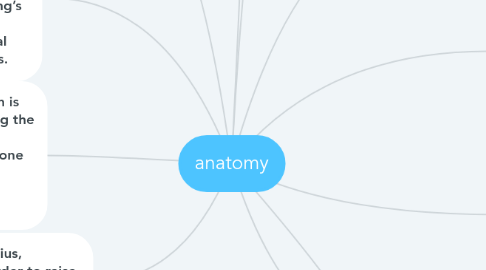anatomy
by German Tello

1. infants are born with many more bones, between 300 and 350, which merge as the body develops.
2. The skeletal system is a system of bones, which serve many vital roles, such as support, movement and calcium storage. An adult human being’s skeleton, which is the everyday term for the skeletal system, consists of 206 bones.
3. head, there is cranium, which is the bone structure protecting the brain. Below it there’s the mandible, which is the bone of the lower jaw. It moves vertically when we eat or speak.
4. backbone, as it supports the whole body. It consists of 24 vertebrae, which are small bone segments. These are very sensitive and any damage to them may result in a serious disorder, disability or even death.
5. there is the trapezius, which we use in order to raise, rotate or draw back shoulders and move our heads.
6. the muscles of the buttocks, and the quadriceps, which are large muscles located in front of the thighs. namely the gastrocnemius and the soleus, the former being larger than the latter.
7. At the top there are the clavicle and the scapula, the bones that our shoulders contain. Extending down from the shoulder is the humerus, the bone in the upper part of our arm, followed by two bones forming a forearm: the radius and the ulna.
8. the pelvis – two large circular bones to which bones of the legs are connected
9. The bone of the thigh is called the femur.the tibia, a wider bone located at the inner side of the lower leg, and the other the fibula, which is the narrower outer bone.
10. Most experts claim that the human body is comprised of around 639 muscles. We’ll now look at the main constituents of the muscular system in the same manner as we did with the skeletal system,
11. we use the abdominals, which are the muscles located around the stomach.


